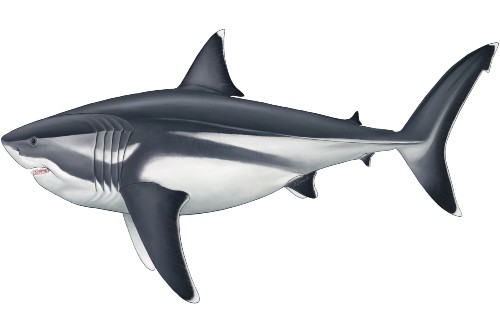This 2016 video from Mexico is called Face to face with huge smooth hammerhead in Cabo San Lucas.
From Nova Southeastern University in the USA:
New shark research targets a nearly endangered species
September 15, 2020
They are some of the most iconic and unique-looking creatures in our oceans. While some may think they look a bit “odd”, one thing researchers agree on is that little is known about hammerhead sharks. Many of the 10 hammerhead shark species are severely overfished worldwide for their fins and in need of urgent protection to prevent their extinction.
To learn more about a declining hammerhead species that is data-poor but in need of conservation efforts, a team of researchers from Nova Southeastern University’s (NSU) Save Our Seas Foundation Shark Research Center (SOSF SRC) and Guy Harvey Research Institute (GHRI), Fisher Finder Adventures, the University of Rhode Island and University of Oxford (UK), embarked on a study to determine the migration patterns of smooth hammerhead sharks (Sphyrna zygaena) in the western Atlantic Ocean. This shark, which can grow up to 14-feet (400 cm), remains one of the least understood of the large hammerhead species because of the difficulty in reliably finding smooth hammerheads to allow scientific study.
To learn about smooth hammerhead behavior, the research team satellite-tagged juvenile hammerhead sharks off the US Mid-Atlantic coast and then tracked the sharks for up to 15 months. The sharks were fitted with fin-mounted satellite tags that reported the sharks’ movements in near real-time via a satellite link to the researchers.
“Getting long-term tracks was instrumental in identifying not only clear seasonal travel patterns, but importantly, also the times and areas where the sharks were resident in between their migrations,” said Ryan Logan, Ph.D. student at NSU’s GHRI and SOSF SRC, and first author of the newly published research. “This study provides the first high resolution, long term view of the movement behaviors and habitats used by smooth hammerhead sharks — key information for targeting specific areas and times for management action to help build back this depleted species.”
The researchers found that the sharks acted like snowbirds, migrating between two seasonally resident areas — in coastal waters off New York in the Summer and off North Carolina in the Winter. Their residency times in these two locations coincided with two environmental factors: warmer surface water temperatures and areas with high productivity — indicative of food-rich areas.
“The high-resolution movements data showed these focused wintering and summering habitats off North Carolina and New York, respectively, to be prime ocean “real estate” for these sharks and therefore important areas to protect for the survival of these near endangered animals,” said Mahmood Shivji, Ph.D., director of NSU’s GHRI and SOSF SRC, who oversaw the study.
Identifying such areas of high residency provides targets for designation as “Essential Fish Habitat” — an official title established by the US Government, which if formally adopted can subsequently be subject to special limitations on fishing or development to protect such declining species.
The tracking data also revealed a second target for conservation. The hammerheads spent a lot of resident time in the winter in a management zone known as the Mid-Atlantic Shark Area (MASA) — a zone already federally closed for seven-months per year (January 1 to July 31) to commercial bottom longline fishing to protect another endangered species, the dusky shark. However, the tracking data showed that the smooth hammerheads arrived in the MASA earlier in December, while this zone is still open to fishing.
“Extending the closure of the MASA zone by just one month, starting on December 1 each year, could reduce the fishing mortality of juvenile smooth hammerheads even more,” said Shivji. “It’s particularly gratifying to see such basic research not only improving our understanding of animal behavior in nature but also illuminating pathways for recovery of species and populations that have been overexploited so we can try and get back to a balanced ocean ecosystem.”
The tracks of the smooth hammerheads (and other shark species) can be found here.

